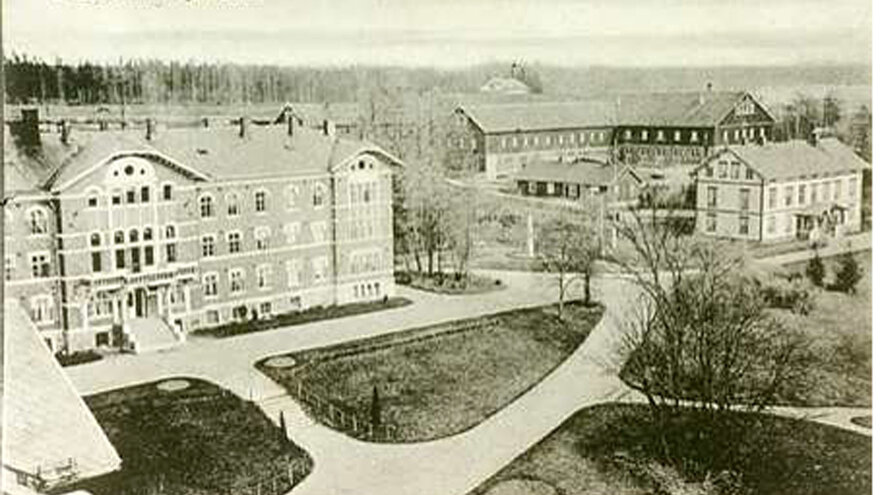Cirkus is one of the three school buildings that were constructed for the start of the school year in 1859. Originally built as the main building, it housed, among other things, the directors until it was renovated in 1901.
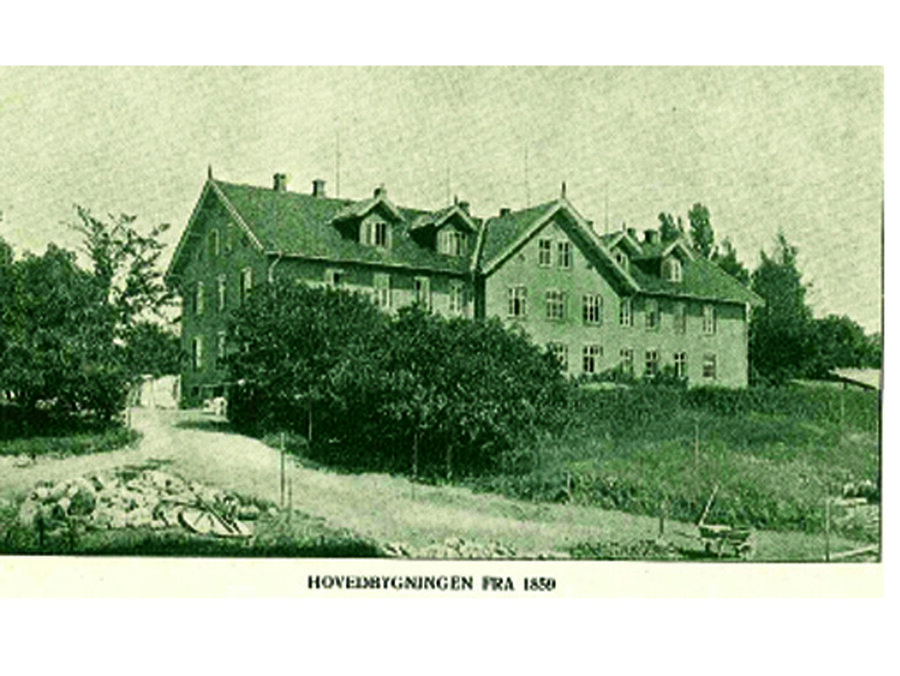
The main building of the Higher Agricultural School in Ås was expanded and renovated in 1901. It was extended by seven meters at each end. Additionally, the old attic floor was removed and replaced with a new third floor and an attic floor featuring the same type of roof as the wing buildings.
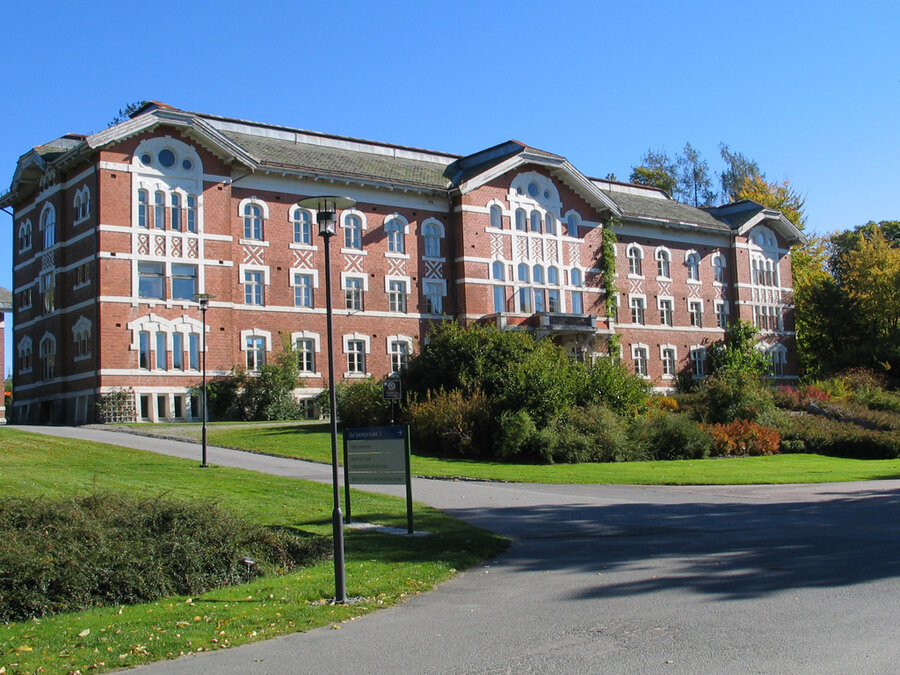
Cirkus was originally constructed as the main building and served as the residence for the director. It was later converted into a dormitory around the turn of the century, but has since regained its function as one of the main buildings.
The building’s new functions resulted in the following room distribution. In the basement, there were residences for two washerwomen, each with a kitchen and a living room. Additionally, there were four bedrooms for the shoe polisher, the baker, and other assistants
In the first floor, there were 22 student rooms and three residences. Two of the residences had two rooms each, while the third one had a single large room. The latter were intended for scholarship recipients and assistants.

On the second floor, there were 23 student rooms and an assembly hall with two reading rooms adjacent to it. From the assembly hall, a door led out to a larger balcony.
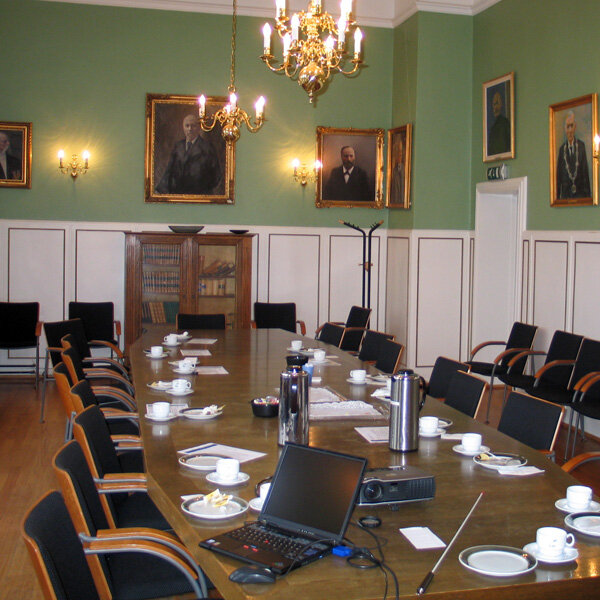
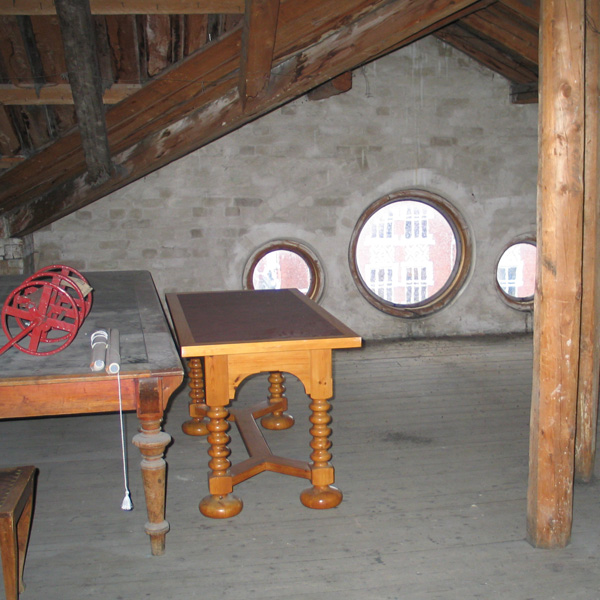
On the third floor, there were 14 student rooms and two teacher residences. One of the residences had four rooms, while the other had five rooms, in addition to a kitchen, a girls’ room, and a housekeeper room. Two of the bedrooms were located in the attic, while the brewer’s house and storage for the roller were in the basement.
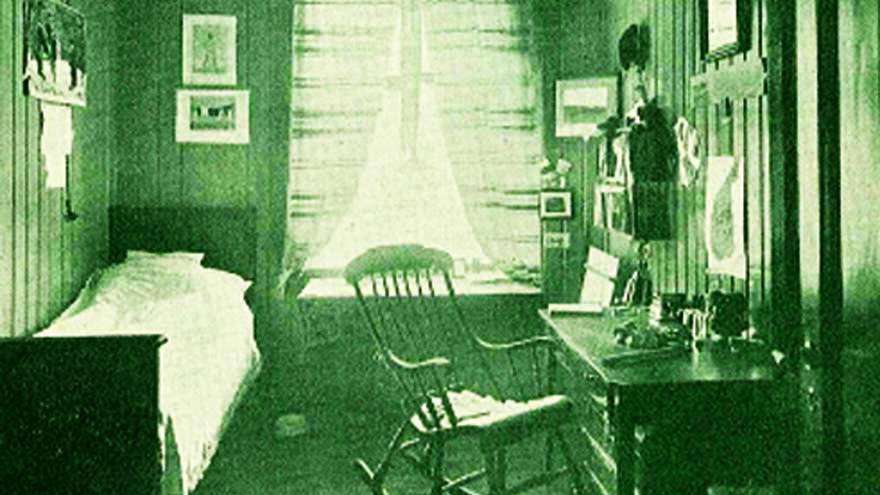
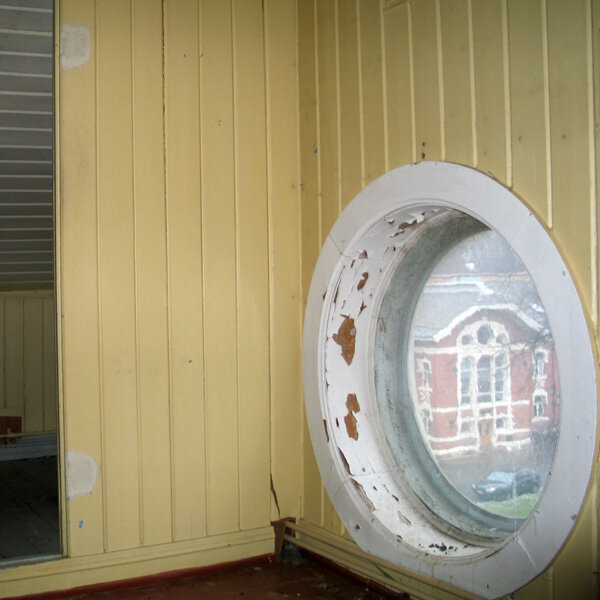
In the attic there was a drying loft and and a large guest room.
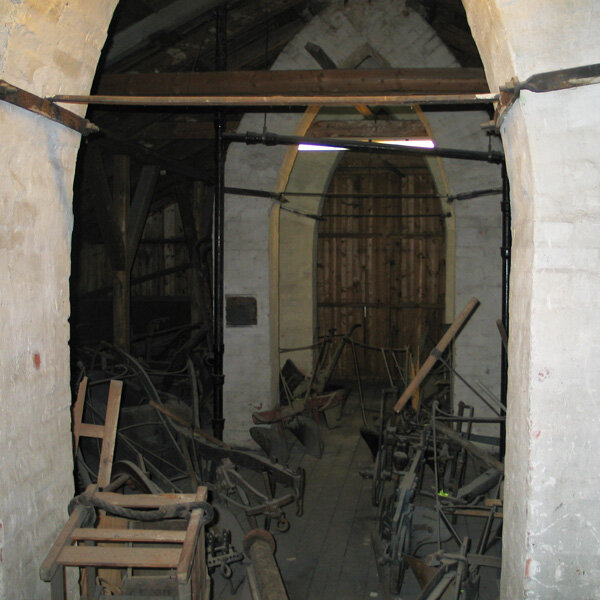
Chest panel in the hallway, a detail also found in Økonomibygningen.
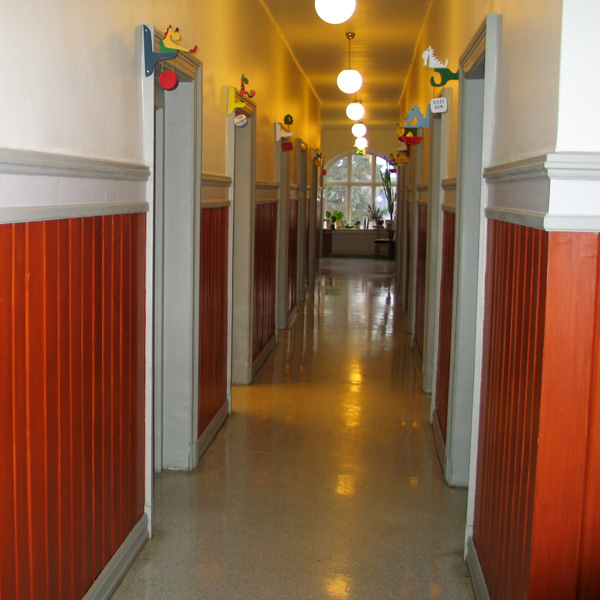
The building was equipped with electric lighting and central heating. For heating, two low-pressure steam boilers were used. In each room, there were radiators on the wall facing the corridor, along with a light bulb controlled by two switches—one near the door and one by the bed.
Cirkus forms an axial front facing the wing buildings in the courtyard. It is longer, has an additional floor, and thus becomes dominant in the courtyard where Svanedammen and Smia create a simpler rounding towards the east. Simultaneously, the building’s facade faces west, serving as a pronounced element in the large-scale park area delimited to the north by the Educational building (now Urbygningen).
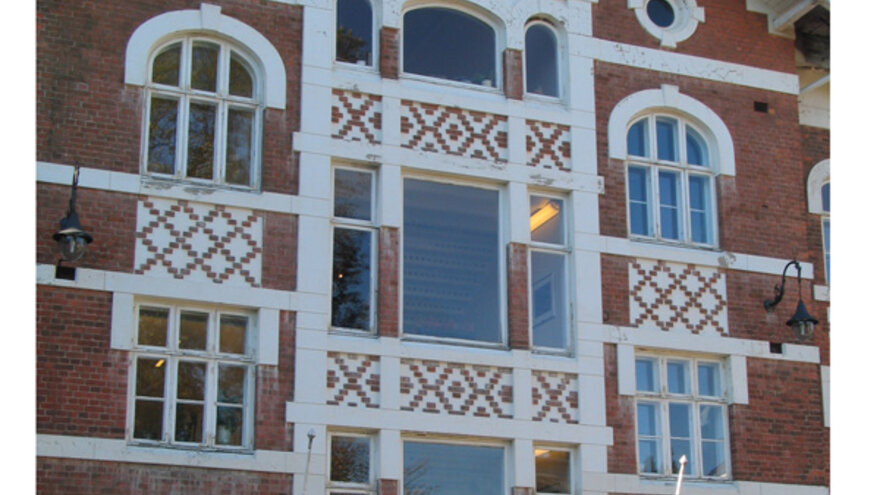
Cirkus features more elaborate embellishments than the wing buildings. Its eastern facade is more ornate than that of Tivoli and Økonomi (the wing buildings), while its western facade enhances detail richness and ornamentation, aligning it with the style of Urbygningen.
The courtyard facade is constructed with a broad and dominant central projection (mid risalite) and corresponding side projections (side risalites) extending the building. The western facade ( the west facade) follows the same structure, but the detailing of the central projection differs. The spaces between the projections feature windows arranged in five regularly spaced axes on both facades.
The facade details has grater richness in expression.
The foundation wall is similar to the foundation wall in the other buildings. In contrast to the gray natural stone in the foundation wall, the external stairs are finely hewn in red granite. Also on this building, there is a continuous plastered band that marks the transition from the foundation wall to the first floor. A corresponding band is found on the 2nd floor at break height under the window eyes, while a third band marks the transition between the 3rd floor and the attic.
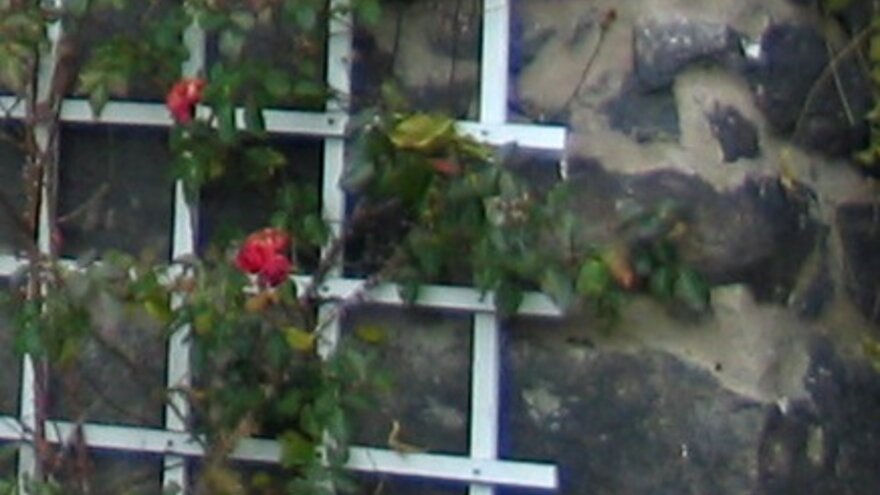
It is not known whether the latter has been made like on the wing buildings. Today there is an ordinary plastered band on the risalites and on the field in between, in addition to this there are two horizontal plastered bands on the middle risalites, at the top and bottom of the parapet between the 2nd and 3rd floors. On the side risalites there is a 6th band at parapet height on the 1st floor. These bands divide the facade into horizontal fields.
There is greater variation in the design of the windows in this building than in the wing buildings. The spaces on the 1st floor have the same type of two-frame cross-post windows as in the wing buildings, on the 2nd floor the windows are rectangular and have straight, broken and plastered framing down to the height of the cross-posts. On the 3rd floor, the window has a covering of a Tudor-like arch and corresponding plastered framing. On all three floors, the window frame has an illusion keystone at the top.
On the second and third floor, all the windows are composed together with St. Andrew's cross decoration of the same type as in the wing buildings. Together, these spaces in the facade give a calm and orderly feel, and a clear material and decorative effect that clearly reveals the ideals of the New Renaissance. On the short walls, the decoration around the window is freely varied. The side risalites have paired, high-set single-frame windows, while the central, which marks the end of the corridor, has wide three-frame windows with high arches above in the 1st and 3rd elevations. Especially at the north end, this decoration represents a transition to the original building.
In the long facade's risalites, the design language is stronger. Here the normal window eyes are composed together in a tight group. In the attic, the continuous window field is crowned with a semi-circular plastered surface with three round windows. It is the entrance motif to the wing building that repeats itself.
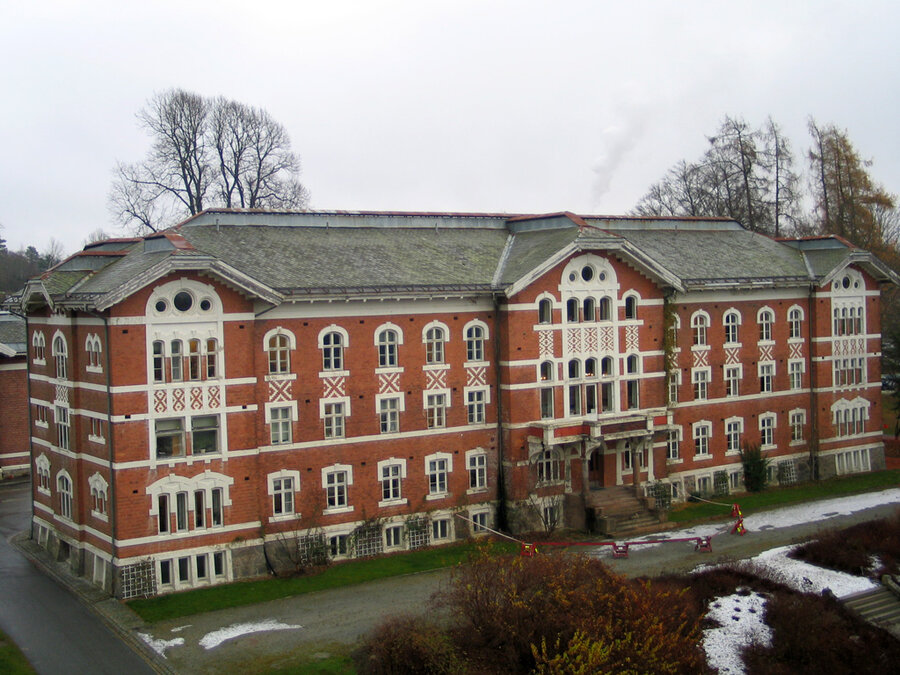
In the mid risalite, something more complex is expressed. On the courtyard side, this is seen as a magnificent and varied version of the entrance area from the wing buildings. The three-part side window gives the entrance area a somewhat unsettling feel and makes this area stand out from the others. Above the double-winged entrance door is inscribed "Aar - Noreg - Landbrukshøgskole 1901".
The west side is composed somewhat differently and seems more calm and "academic". It has an axially wide entrance door with a three-bay window on each side. Immediately above this, the balcony from the assembly room juts out. On the flanks it is pierced by powerful curved consoles and in the middle by Tuscanizing columns of reddish granite.
The columns have a base on the rails of a monumental staircase in the same material. Extraordinary height on the 2nd and 3rd floors means that the crowned field is raised somewhat and that the parapet field is higher. In addition, there are single windows on the sides. Together, this gives a more calm expression.
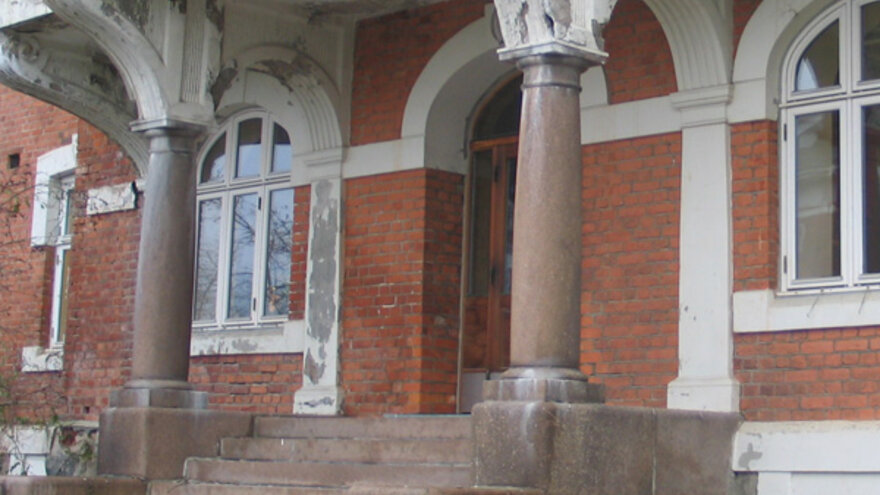
This part of the facade was originally drawn somewhat differently, but was changed during construction. This probably has something to do with, among other things, the fact that the symbolic decoration that was drawn in was the hallmark of the recently constructed Urbygningen.
